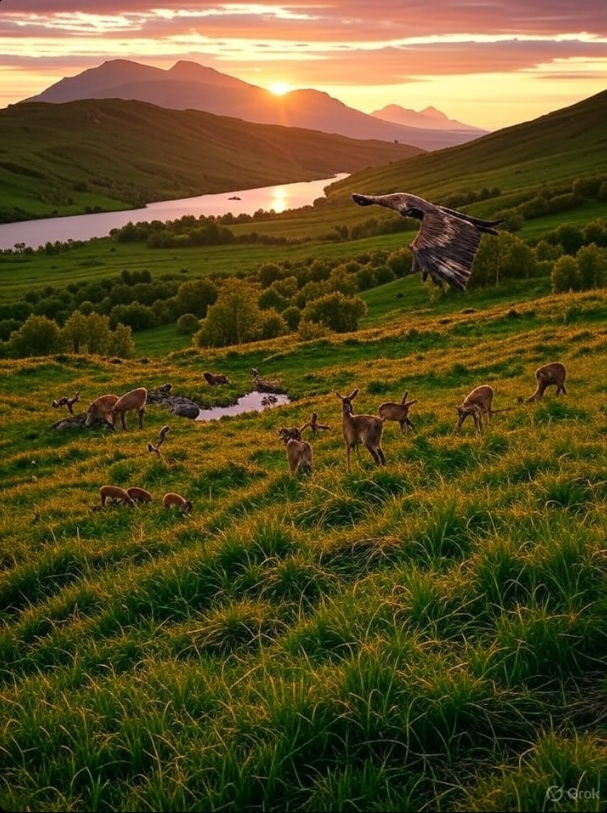Scottish Government initiatives push Scotland well ahead of the rest of the UK in preserving nature
By johnrobertson834,Support Talking
Copyright talkingupscotlandtwo

Professor John Robertson OBA
In the Guardian today:
Area of England well protected for nature is in decline, data shows – Wildlife coalition says figure stands at 2.83% of country, less than in 2024 and tiny fraction of the 2030 target of 30%. The area of England protected effectively for nature is continuing to decline, according to data from the country’s largest coalition of wildlife organisations, as experts say the government is allowing habitats to deteriorate.
The government is under a legal obligation to protect 30% of land and sea in the UK for nature by 2030, a pledge made in 2020 by the then prime minister, Boris Johnson. At the moment, however, 2.83% of England is well protected for nature, 2.4% of Wales, 4% of Northern Ireland and 12.6% of Scotland. This gives an average of 6% of the UK as a whole, which is well below the target.
While the notion that more than 4 times as much of Scotland is protected for nature looks, at first sight, I instantly felt sure that figure of 12.6% was lower than other data I’ve seen recently and, crucially, the report includes Scotland in the claim that it’s declining.
First, from NatureScot in August 2023:
About 18% of Scotland’s land is protected for nature, but this increases to 23% if you include national parks. To reach the 30% target by 2030, Scotland needs to increase protection by 7–12%.
Then in September, the same year, on the 28th, BBC Scotland in their BBC Breakfast insert, claimed:
Research from the RSPB and other nature organisations say we’re now one of the most nature-depleted countries in the world.
This is a lie. ‘We’ are not:
The report does say on page 3:
The UK is now one of the most nature-depleted countries on Earth.
Nowhere is Scotland given that title and with good reason when you dig deeper. On the basis of a 30 minute look at a 200 plus page report:
While there are clear and disturbing reductions especially in seabirds and harbour seals (page 5), but also in plant and other species, the rest of the story is a bit different.
Protected areas
England 11%, Wales 10%, Scotland 18%.
Forestry – areas of certified woodland
England 315 000 ha; Scotland 895 000 ha (53) – 8% of the population , 70% of the trees.
Source: chrome-extension://efaidnbmnnnibpcajpcglclefindmkaj/https://stateofnature.org.uk/wp-content/uploads/2023/09/TP25999-State-of-Nature-main-report_2023_FULL-DOC-v12.pdf
More recently, 31 May 2025:
Scottish Government invests £55 million in restoring biodiversity and there’s a ‘staggering butterfly boom’ but they get no credit for it
From Discover Wildlife:
More than 500 small blue butterflies have been spotted at a single site in Scotland – a record-breaking number for one of the UK’s most threatened butterflies. Butterfly Conservation volunteer Richard Aspinall logged 523 small blues in just 90 minutes at Balnagown Estate near Invergordon. It more than doubles last year’s total and marks a hopeful sign for the species’ future, say conservationists.
How did this happen? Not for the first time these UK conservationists have little to say about the role of the Scottish Government in promoting and funding the conservation of biological diversity.
Why should they?
The Scottish Government’s Nature Restoration Fund (NRF) has awarded over £55 million since its launch in 2021, including to more than 240 projects through the competitive fund run by NatureScot. Projects are delivering exciting on the ground activity to protect and restore Scotland’s biodiversity while helping us build resilience to climate change. There has been a tremendous response across Scotland to harness the opportunities provided by the NRF. Our Nature Restoration Fund – supported projects page shows the range of projects supported across Scotland.
I’m not a expert but I feel sure butterflies don’t suddenly thrive unless you restore a wider healthy environment more generally.
Is this a first for Scotland and the SNP in Government? Nope. See:
Massive seagrass project – Scottish Government provides core funding for this high profile project but you’d never know that from the reporting



